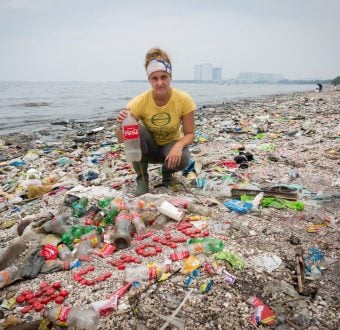China is often referred to as the world’s factory; manufacturing more than half of all the computers and mobile phones produced worldwide. Living in China and working for Greenpeace, I have seen first-hand the destructive impacts this industry can have on our fragile environment. I also know that any steps taken by major global brands, like Apple, can potentially have a huge impact on suppliers in my home country.
On Tuesday, Apple announced a new commitment to tackle hazardous chemicals in its manufacturing supply chain. This included a ban on two dangerous chemical substances benzene and n-hexane often used in cleaning agents. This news comes after months of public pressure, including a petition fromChina Labor WatchandGreen Americawho called on Apple to address concerns about worker safety in its product supply chain.
For the first time, Apple also made public itsRegulated Substances Specification(RSS) a list of restricted substances for suppliers representing an important step towards increasing the company’s transparency and accountability. While Apple might not be the first company to release a list like this, it is one of the largest to do so, and this move will hopefully set an example for others to follow. Such a list encourages companies to speed-up reducing and eliminating hazardous substances, especially in Global South countries, like China, where regulations tend not to be as stringent as in Europe or North America.
While Apple and other companies are making progress down the road towards removing hazardous substances from our mobile phones, laptops and other electronics products, tens of thousands of chemicals are still being used in manufacturing them. Many of these substances are just as a harmful to human health and the environment.

In 2009, Greenpeace China released a report investigating electronics manufacturing facilities on the Pearl River delta.‘Poisoning the Pearl’revealed that three facilities making printed circuit boards were found to be discharging a number of organic pollutants into the Pearl River, including brominated flame-retardants.
Greenpeace is not alone in its calls to change the industry. Besides China Labour Watch and Green America, since 2008, a coalition of 40 Chinese NGOs, including IPE (the Institute of Public and Environmental Affairs) launchedthe Green Choice Alliance (GCA). This project aims to curb environmental pollution in China’s manufacturing hubs by trying to make supply chain management systems transparent.
Apple’s latest commitments show that companies listen when people demand change. It also shows they can and should be responsible for investigating their own supply chains and reveal the results to their customers. Transparency is the first step on the pathway to ridding our phones, computers, tablets and the electronic devices of hazardous substances for good. Global companies have a responsibility to protect our health and our environment, both inside and outside the factory fence line.


